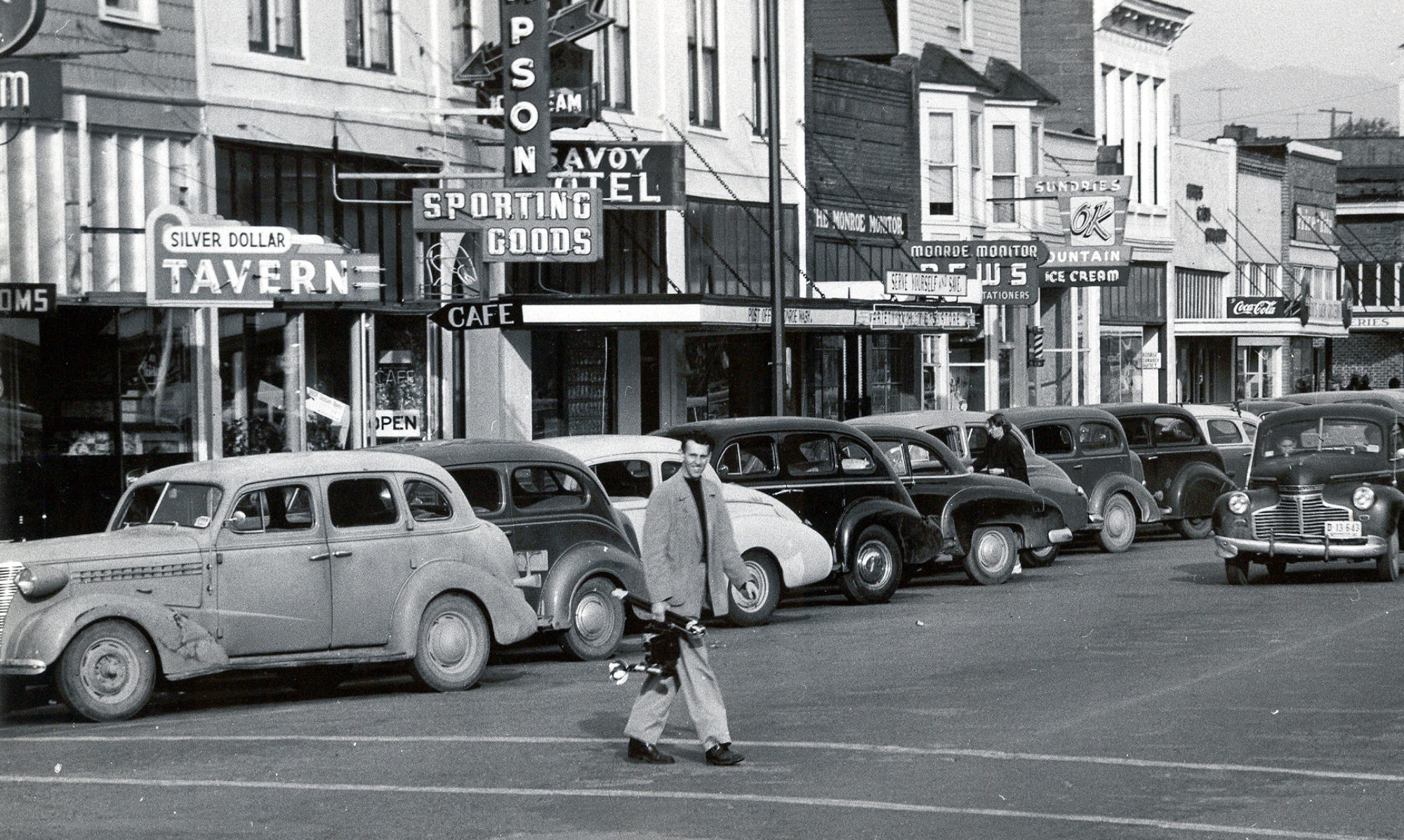Part 1 of 14: Memories of Long Ago
by Hiram Ellsworth Pearsall
In 1890, it became a settled fact that the Great Northern Railroad would come across the Cascade mountains, down the Skykomish River and across the flat where Monroe now stands. In a short time, the railroad arrived and a village began to build. They called it Tye City.
Then the cry was, water, water. A number of times I answered the call by digging their wells, usually through 25 to 50 feet of sand and gravel we would strike water sufficient for household purposes. I will tell about one of those wells later in the writing.
The railroad arrived, the steam shovel and work train was busy hauling gravel from the pit north of town to ballast the line to Everett. Everett, like Tye City, was growing fast. January 1893 saw the first through train come through on the Great Northern. The name, Tye City, was changed to Monroe, as the post office of Monroe had moved up from Park Place.
The little town was growing fast. A number of families were moving in. Business buildings were being built along Main Street. Soon many railroad men and loggers were seen on the street visiting the seven saloons, and again the cry was water, water.
J.E. Dolloff, the first businessman in Monroe, answered the call by going up the Woods Creek valley and tapping a spring and piping the water to Monroe. That satisfied the cry for water until the block south of Main Street between Lewis and Ferry streets on Oct. 16, 1900, caught on fire. Then again, the cry was water, water. As we soon found the Dolloff water system very inadequate for fire fighting, the only solid block burned to the ground.
There was no water for fire protection. The town sorely needed both. The citizens had tried to incorporate before but they found the population was not sufficient to incorporate at that time.
Ed Roberts and H.E. Pearsall (writer of this account) consulted Everett attorney Earl Hustead and employed him to draw up the necessary papers for incorporation.
In due time the town incorporated. An election was called to elect town officers. N.P. Heintz was the first mayor. The five councilmen were Pete Suel, John Brady, W.J. Williams, Alfus Buck and H.E. Pearsall. R.J. Stretch was elected clerk; Ed Roberts, treasurer; and John Daly was appointed marshal. This was in 1902.
Again, J.E. Dolloff answered the call by asking for a 25-year franchise to furnish sufficient pure water for the town. S.A. Buck also asked for a 25-year franchise to furnish sufficient pure water for the town. It was plain to see that Buck would get the franchise which I objected to on the grounds that Dolloff had a considerable amount of money invested furnishing the town with water and he was entitled to the franchise if anyone was. I insisted the town should put in its own water system. After much discussion, the mayor appointed me as a committee of one to look up the matter and report at the next meeting. Buck got the franchise in spite of what Pearsall learned about the spring on the hill back of Fern Bluff which would supply a town three or four times the size of Monroe. The council said the town would be much larger than that and gave the franchise to Buck with Pearsall’s vote the only dissenting one.
Buck got busy at once to answer the cry for water by pumping out of wells and sometimes out of the river. And still the cry was water, water, not for quantity but for quality. Proof of which could be read on the wall of a building in the town of Index which read, “Please pull the chain, Monroe needs the water.”
Mr. Marshall purchased the water system from Buck when Buck’s franchise ran out, and the city acquired the system from Marshall in 1922.
When the Monroe Land and Improvement Co. started the town, they built four business houses and one dwelling house to help boom the town. One of these buildings was located on North Lewis Street and used as a creamery.
They sold shares in the company to a few of the dairymen in the vicinity. I had $50 in the company, which I paid for in labor on the building and digging a well to furnish water for the creamery. That well has long been in my memory. It was dug through loose sand and gravel to a depth of 22 feet and then we struck hard pan. On top of the hard pan, we struck water, which they thought would be sufficient for that purpose.
When it went dry, they drilled through 22 feet of hard pan to quicksand and the water bubbled up into the dry well, enough to supply the creamery.
–transcribed from the 1944 Monroe Monitors by Nellie Robertson
